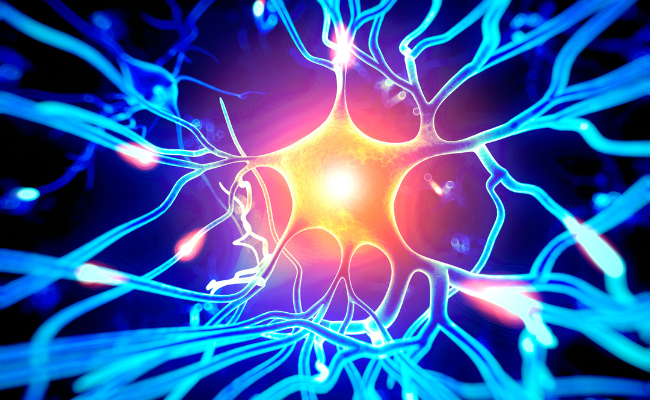How to Treat Lambert Eaton Myasthenic Syndrome?
- October 13, 2023
- No Comments

What is Lambert-Eaton Myasthenic Syndrome (LEMS)?
Lambert-Eaton Myasthenic Syndrome (LEMS) is a rare autoimmune disorder impacting the neuromuscular junction, where nerve cells connect with muscles. This condition causes the immune system to mistakenly target these connections, disrupting neurotransmitter release and leading to muscle weakness. Often associated with small cell lung cancer, LEMS primarily affects adults, with symptoms ranging from mild weakness to severe muscle impairment. It is characterized by an autoimmune disruption of a crucial chemical necessary for effective communication between nerve cells and muscle fibers. Notably, a significant number of LEMS patients also face the challenge of small-cell lung cancer.
Why Does Lambert-Eaton Myasthenic Syndrome Occur?
LEMS is an autoimmune disorder, meaning it results from the body's immune system attacking its own tissues. In LEMS, the immune system targets the voltage-gated calcium channels in the neuromuscular junction. These channels play a crucial role in transmitting signals from nerves to muscles. When these channels are disrupted, the release of acetylcholine (a neurotransmitter) is impaired, leading to muscle weakness and fatigue.
The link between LEMS and small cell lung cancer is significant. Tumors in the lungs can produce similar proteins to those found in the neuromuscular junction, triggering an immune response that inadvertently attacks both the tumor and the neuromuscular junction.
How is Lambert-Eaton Myasthenic Syndrome Diagnosed?
Diagnosing LEMS involves a combination of clinical evaluation, electromyography (EMG), and blood tests. Physicians will assess the patient's medical history and symptoms, looking for signs of muscle weakness and fatigue. EMG, which measures the electrical activity of muscles, can help identify characteristic abnormalities associated with LEMS.
Blood tests often reveal the presence of specific antibodies, such as P/Q-type voltage-gated calcium channel antibodies, which are indicative of LEMS. Additionally, imaging studies, such as chest CT scans, may be conducted to check for underlying tumors.
Treatment Solutions for Lambert-Eaton Myasthenic Syndrome:
Immunosuppressive Therapy:
- Immunosuppressive medications are commonly prescribed to manage LEMS.
- These drugs work by suppressing the immune system, reducing the attack on the neuromuscular junction.
- Examples of immunosuppressive drugs include prednisone, azathioprine, and mycophenolate mofetil.
- While these medications can be effective in alleviating symptoms, they may have side effects that require careful monitoring.
Plasmapheresis:
- Plasmapheresis is a procedure that involves removing blood from the body, separating the plasma (which contains antibodies) from the blood cells, and then returning the blood cells to the patient.
- This process helps remove harmful antibodies from the bloodstream, providing temporary relief from symptoms.
- Plasmapheresis is often used as a short-term solution during acute exacerbations of LEMS.
Intravenous Immunoglobulin (IVIG):
- IVIG is a treatment that involves infusing a patient with a high dose of antibodies collected from donors.
- This therapy helps modulate the immune system, reducing the autoimmune response against the neuromuscular junction.
- IVIG is typically administered regularly to maintain symptom control.
Symptomatic Treatment with Acetylcholinesterase Inhibitors:
- Medications such as pyridostigmine, an acetylcholinesterase inhibitor, can be used to improve neuromuscular transmission.
- By preventing the breakdown of acetylcholine, these drugs enhance the signaling between nerves and muscles.
- While they don't address the underlying autoimmune process, they can help manage symptoms and improve muscle strength.
Benefits of Treating Lambert-Eaton Myasthenic Syndrome:
- Improved Muscle Function: Effective treatment of LEMS can significantly improve muscle function and reduce weakness. This, in turn, enhances the patient's ability to perform daily activities, leading to a better quality of life.
- Prevention of Complications: Timely and appropriate treatment can help prevent complications associated with muscle weakness, such as falls and injuries. Managing the underlying autoimmune process also reduces the risk of related complications.
- Enhanced Respiratory Function: In severe cases of LEMS, respiratory muscles may be affected, leading to breathing difficulties. Treatment helps maintain respiratory function, preventing respiratory failure and associated complications.
- Management of Underlying Cancer: For individuals with LEMS associated with small cell lung cancer, addressing the underlying malignancy is crucial. Effective treatment not only improves neuromuscular symptoms but also contributes to the management of the cancer.
Comments (0)